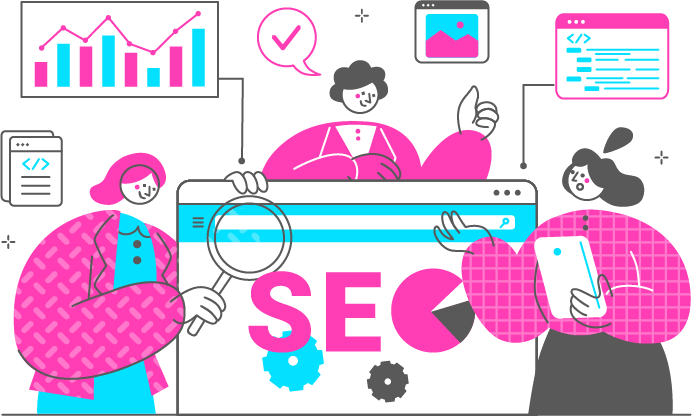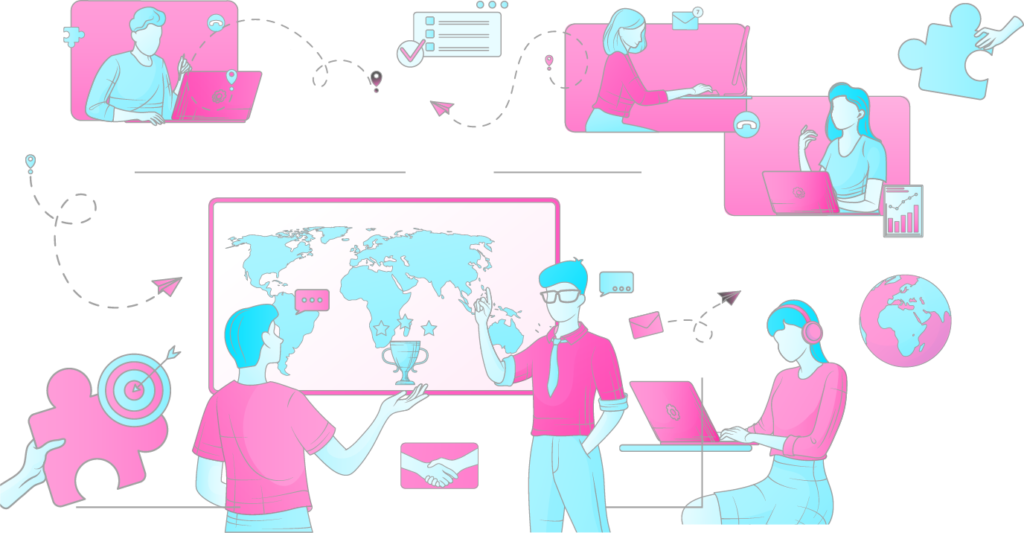International SEO is a set of techniques used to expand visibility in foreign markets to increase audience, leads and, of course, sales. For this, we need both specific SEO techniques and marketing and translation experts.
What is international SEO?
First things first: we must define what we are talking about. Starting with the most basic aspects: SEO (search engine optimisation) is an assortment of writing, programming and marketing techniques aimed at placing a website at the top of search engine results pages.
In the same vein, if you want to reach different parts of the world, you will understandably have to make some changes. Firstly, the website language. You must also be aware which characteristics will not work in areas outside the domestic market. Then, there are loads more tiny details that make up what we call international SEO.

Differences between local and international SEO
As a starting point, it is important to know how to measure differences on what we could call an "SEO scale" to distinguish between different levels of geographic positioning. The most obvious way to understand this is to use an example.
- It does not make much sense for businesses whose market is close by, such as restaurants or hairdressers (with perishable products or in-person services) to try to sell to customers who are ten thousand kilometres away from where they are located.
- It makes absolute sense for businesses that can deliver their products or services remotely, so to speak, to design and implement an international SEO strategy that can adapt to different markets and languages.
Halfway between the two is what you could call "national SEO"; that's right, this means any positioning that is geolocated (i.e. defined, by whatever means, within a geographical reference framework) in a specific national market; a combination of language and culture from a broad geographical region that we would usually call local for a professional association.
The benefits of translating and positioning a website to generate leads
International SEO is clearly a marketing device, but as we said earlier, it also involves translation and programming. So, why do all this website positioning work? To obtain more leads and ultimately generate more sales. We're going to highlight the three successive advantages that all this offers us.
Expand your international target audience
Firstly, people need to see you, find out about you and recognise you. One way of putting it is that visibility and establishing a recognisable brand image are the foundations of any commercial endeavour. And however we put it, due to a simple rule of threes, the bigger the audience, the greater the chance of generating leads.
Ah, and what are leads ... Sorry. This is marketing jargon for people (we also call them "prospects") who have shown some interest in your service or product, or even just in your brand. When you have also obtained some of their demographic or contact data, they become "qualified leads" and potential customers.
Within digital marketing, internationalisation is a very direct path (which is accessible to any company or project, regardless of size) towards expanding your target audience and, therefore, towards acquiring more potential (and real) customers. Provided, that is, we adapt to each market in terms of language, culture, consumption patterns, etc.
Boost your website ranking (international SEO)
If people find out about you, see you, read your content and search for you on the Internet, your position will automatically improve at local, national or international level. This is clearly true when you consider the mechanics of search engine positioning: the more visibility, better positioning, and higher positioned we are, the more they will see us, and...
This is like a fish biting its own tail; the most difficult thing to do in the circle of visibility and positioning is simply to start. And, apart from specific, precise and isolated techniques, the "driver" is always quality content; that's what matters most to Google and other search engines.

Once you understand that generating good content catapults you to a top search engine position, you also know what you have to do to position a website in the international arena and multiply your economic returns by X: translate, and translate well. We'll consider this last "little detail" in greater depth later, but the idea is that it should not seem like a translation.
Improve the experience of international users
User experience (the famous UX) is now one of the most important components of any analogue or digital marketing project. And there's a reason for this: if your user/customer is not satisfied with the experience you have provided, you can wave goodbye to success.
The "experience" we are all so concerned about is, in digital terms, the series of interactions the user has with us through our website, from accessibility or content loading time to the online after-sales service offered to the customer. And, of course, the user's perception of these interactions!
When a business enters the international market, it is clear that language plays a key role in generating a positive, fluid and natural user experience. We will not mention again the well-known statistic about how much people prefer to browse and make purchases in their native language, because we are all well aware of this already, right?

How to translate and localise your website to generate leads
And so we arrive, as if by accident, at the heart of the internationalisation issue: your greatest concern should be how to translate your website in a way that best suits your purposes. And what is the best way to do this? These are the three pillars of translation applied to international marketing.
Market research and keywords
The first step in any international SEO project (whatever it may be) is to gather together all the relevant available data on the market you want to enter, analyse it and then turn it into useful and valuable information to get your strategy right. Do you have an understanding of your target audience, competitors and market characteristics?
Let's imagine the typical and popular scenario of translating your website into English, with a focus on language issues. Are you going to use British, American or "standard" English, or another more specific variant? Should you address your audience in a colloquial or formal tone? Above all, be sure you're not trying to sell umbrellas in the Sahara.
Keywords are just one aspect of the positioning strategy we are going to implement, but they are certainly not the least important! An incorrect keyword translation can derail any international SEO strategy; that's why this issue appears in every list of errors in this field.
Cultural and linguistic adaptation of content
We have just talked about translating keywords... OK, so a literal translation or a non-specialised machine translation is the easiest route to failure. This applies to all your website content; when translating a website, what you are really going to do is localise it.
What’s that? Localisation involves adapting content according to the characteristics of the target culture, to the point of being able to perform localisation within the same language (if you don't believe this, try to sell "polleras" in Spain or "móviles" in Argentina). This includes issues that are not related to language, such as religious matters.

It also involves establishing technical criteria with regard to web positioning. The questions that usually arise concern meta tags, user interface design, the systems used for measurements and symbols, regulation... In short, just translating the content is not enough, you have to understand who your intended customers are.
Translation tools and techniques
You will have already realised that you cannot use Google Translate and your brother-in-law who works in IT to plan and implement an international web positioning project. You need specific tools and techniques, as well as people who have proven experience of how to use these techniques and tools.
Generally speaking, this means:
- Experts in SEO positioning who are familiar with the best practices for on-page and off-page technical SEO, as well as segmentation, data analytics, benchmarking, social media, multimedia content...
- Experts in persuasive SEO-oriented writing, i.e. copywriters who know what they are doing in terms of both content creation and understanding the target market.
- Professional automation software that can be used for SEO optimisation and computer-assisted translation, as well as workflow management.
Why use ATLS for your international SEO strategy
Given the above and everything you have at stake, your best bet is to employ professionals. Our international marketing and translation agency has what you need: a team of professional experts, extensive experience and great international SEO strategy results, as well as state-of-the-art automation tools to make the project more technically efficient and economically competitive.






